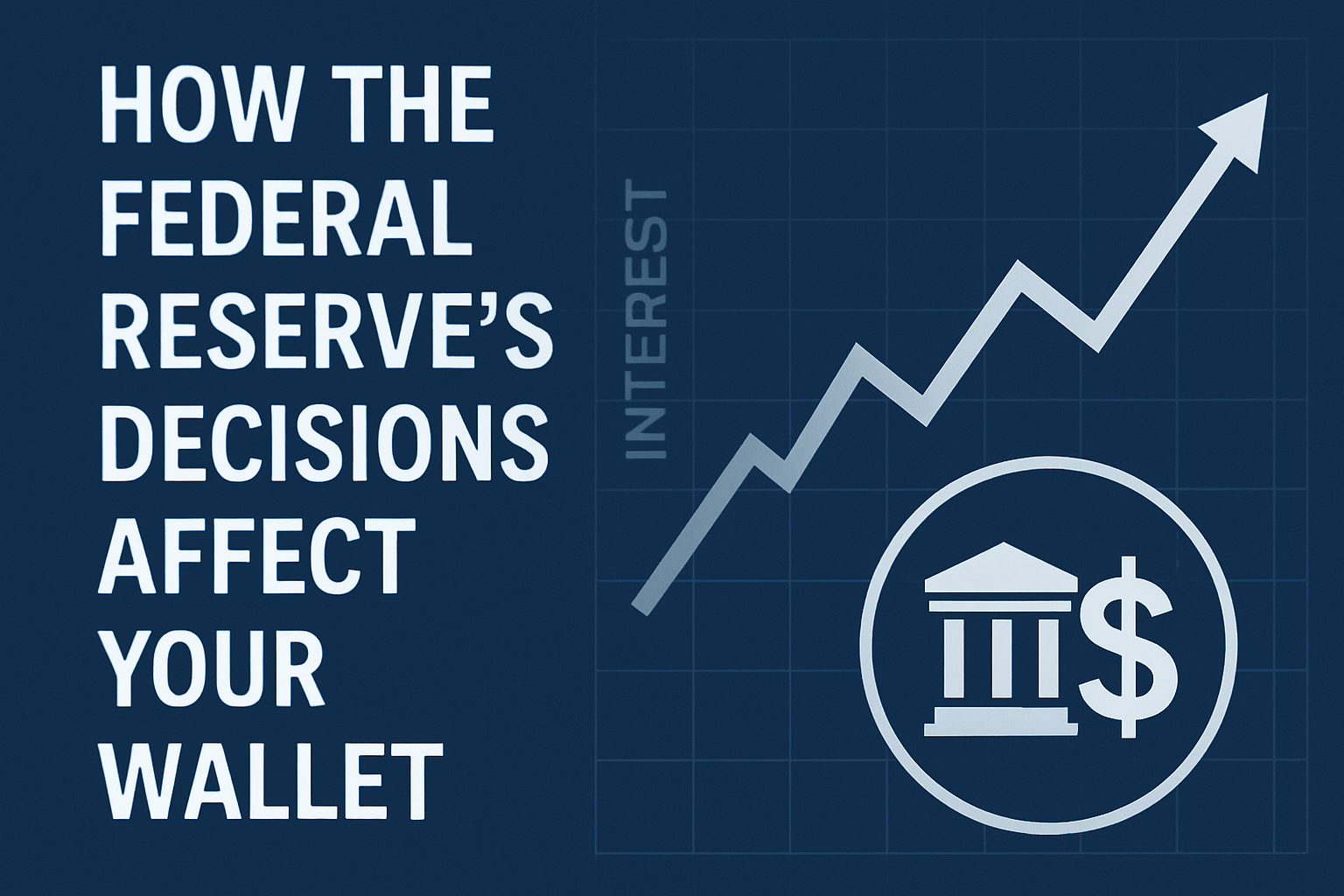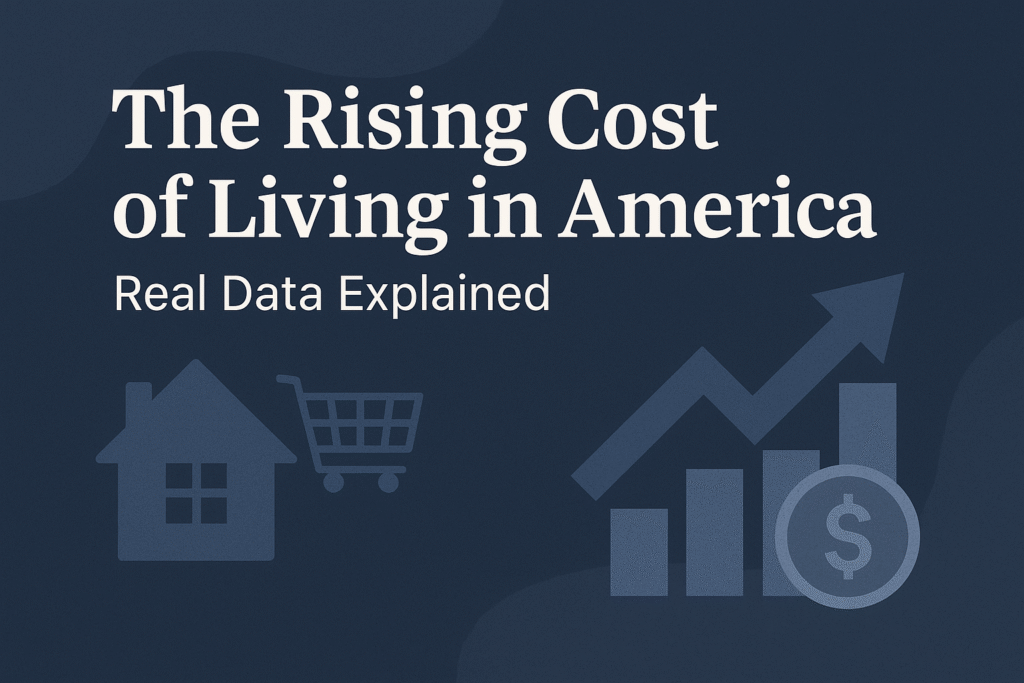After two turbulent years of price surges, high interest rates, and cautious optimism, Americans are asking the same question:
👉 Will inflation finally cool down in 2025, or are we in for another year of rising costs?
The short answer: inflation is stabilizing, but not done with us yet.
Let’s break down what to expect this year — from consumer prices to Federal Reserve policy — and what it all means for your wallet.
1. Inflation Is Slowing, but Still Above Target
The Federal Reserve’s long-term inflation target remains 2%, but 2025 is likely to hover between 2.6% and 3.2%, according to most economists.
In 2024, price growth cooled dramatically compared to 2022’s peaks, yet the “last mile” — getting from moderate inflation to the 2% goal — has proven stubborn.
Sectors like housing, healthcare, and insurance continue to push prices up faster than expected.
📊 Key insight:
Core inflation (excluding food and energy) remains sticky because service-based sectors are still facing labor shortages and wage pressure.
2. The Federal Reserve’s Balancing Act
After one of the most aggressive rate-hiking cycles in modern history, the Fed is now in a delicate position:
- Cut rates too soon → risk reigniting inflation.
- Wait too long → slow down the economy too much.
Analysts expect two or three small rate cuts in 2025, likely in the second half of the year, as long as inflation continues its downward trend.
💬 Jerome Powell’s stance:
“We’re confident inflation will return to target, but patience remains key.”
For borrowers, this means mortgage and credit card rates may finally start to ease — but not dramatically.
3. Housing and Rent Remain Key Drivers
One of the biggest inflation pain points? Shelter costs.
Even though home prices have stabilized in some markets, rents remain historically high, and demand for housing far exceeds supply.
In cities like Miami, Austin, and Phoenix, average rents rose another 5–7% in late 2024.
Builders are still catching up from pandemic-era shortages, so relief might not come until 2026.
🏠 Impact on consumers:
If you’re a renter or first-time homebuyer, 2025 will still feel expensive — though less chaotic than 2022–2023.
(Related: How the Federal Reserve’s Decisions Affect Your Wallet)
4. Energy Prices: The Wild Card
Oil and gas remain unpredictable factors in the inflation equation.
While energy prices cooled through much of 2024, geopolitical tensions and global supply shifts can still spark short-term volatility.
The Energy Information Administration (EIA) projects average crude prices to remain between $70–$85 per barrel in 2025, assuming no major disruptions.
⚡ What it means for you:
- Gas prices should stay below the 2022 highs.
- Energy bills may fall slightly thanks to milder price swings.
- But expect some volatility if geopolitical risks escalate.
5. Wages Are Catching Up — Slowly
The good news: real wages (adjusted for inflation) are finally rising again.
Wage growth averaged 3.5% in 2024, slightly outpacing inflation for the first time since 2020.
However, wage gains vary dramatically across industries:
- Tech and healthcare continue to see strong increases.
- Retail and hospitality remain flat due to automation and tight margins.
💡 Insight:
Consumers are regaining some purchasing power, but higher costs for housing and insurance continue to squeeze middle-class households.
6. What Consumers Can Expect
For the average American family, 2025 will still feel “expensive, but predictable.”
Groceries, insurance, and education costs are expected to climb modestly, while some relief arrives in:
- Fuel and energy
- Electronics and appliances (thanks to improved supply chains)
- Travel (as demand normalizes post-pandemic)
🧾 Example:
The average family of four spent $6,000 more per year in 2023 than in 2020 on basic living costs. In 2025, that number may finally plateau — but few expect prices to drop significantly.
7. Long-Term Outlook: Slow Return to Normal
Economists predict inflation will settle near 2.5% by 2026, provided:
- Wage growth remains steady but moderate.
- Supply chains continue to improve.
- The Fed avoids over-tightening.
In short: 2025 is a transition year — from crisis-level inflation to cautious normalization.
It’s not a return to pre-2020 prices, but it’s a step toward stability.
Final Thought
Inflation may no longer dominate headlines, but it still shapes daily life.
From your rent to your grocery bill, small improvements can add up to big relief — even if it doesn’t always feel that way.
For investors and consumers alike, 2025 is the year to stay informed, stay diversified, and prepare for slow but steady progress in the U.S. economy.
(Also read: Will There Be a Recession in 2025? Economists Share Insights)


Pingback: Global Debt Crisis: What It Means for Everyday Investors
Pingback: Economic Indicators You Should Track Before Investing
Pingback: How the Federal Reserve’s Decisions Affect Your Wallet
Pingback: The Rising Cost of Living in America: Real Data Explained
Pingback: How Job Market Trends Are Shaping the U.S. Economy